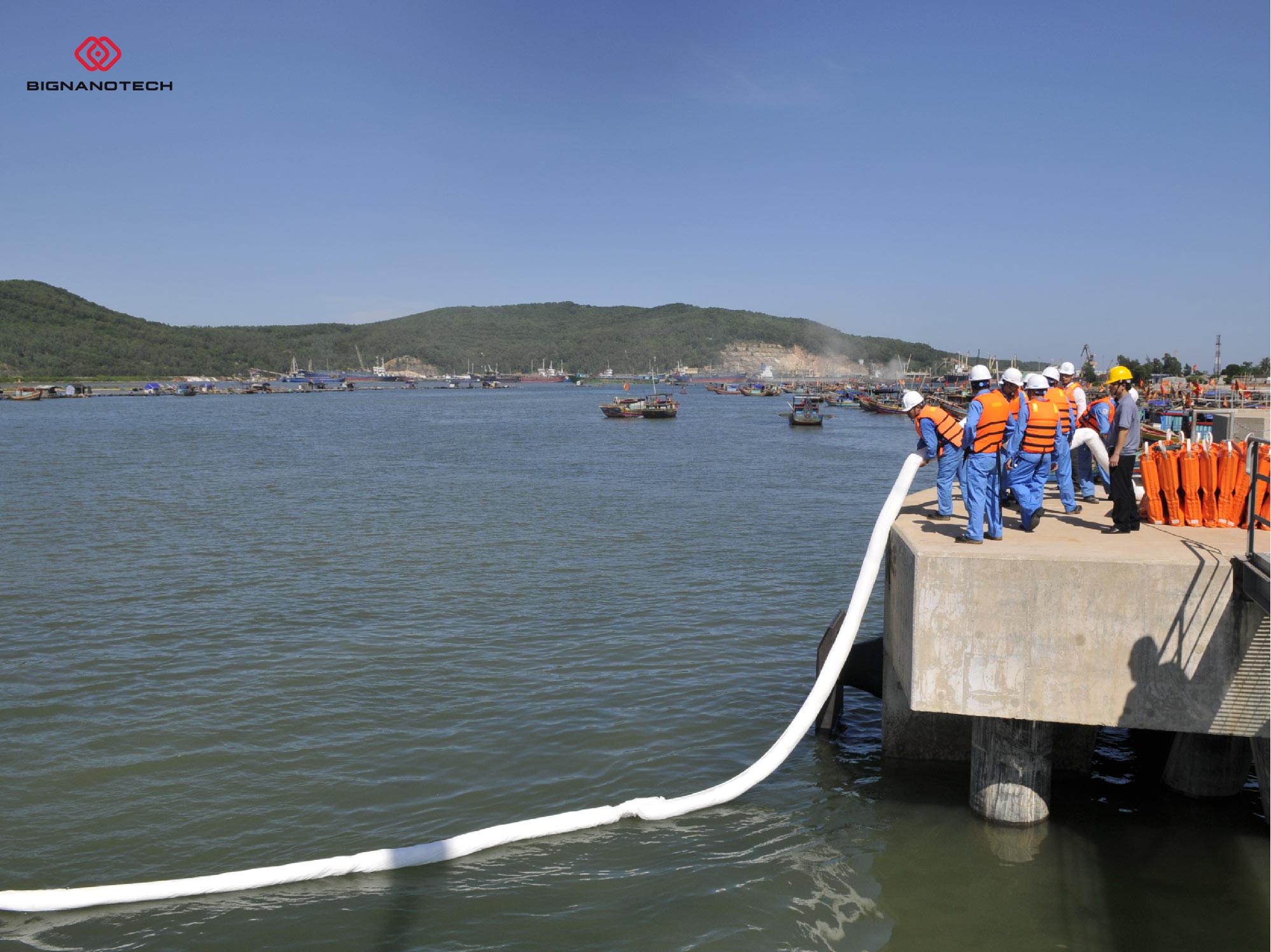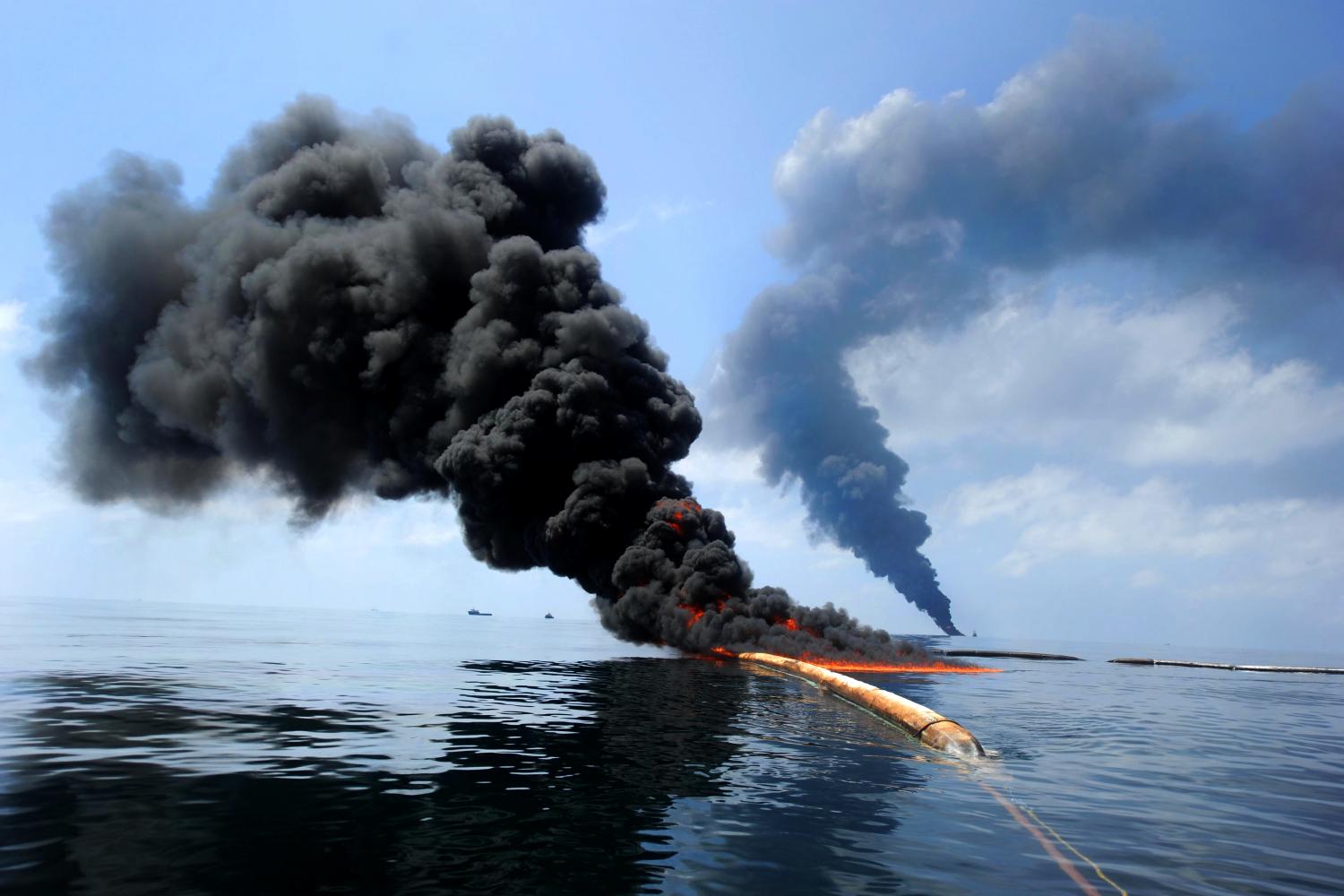An oil spill is the release of liquid petroleum hydrocarbons into the environment as a result of human activities. Oil spills commonly occur in the search, exploration, extraction, transportation, processing, distribution, and storage activities of oil and gas and its products. The phenomenon of leakage, oil injection, pipeline rupture, tank rupture, collision accident causing ship puncture, shipwreck, incident at oil and gas rigs, refinery and petrochemical facilities, etc. make oil and products Oil escaping causes environmental pollution, adversely affects ecology and damages economic activities, especially activities related to exploitation and use of aquatic resources.
So how to handle oil spills? Let's consult with Bignanotech for some effective oil treatment measures:
1. Use an oil-absorbing boom to prevent oil on the water
This is the preeminent method that is most commonly applied in the treatment and control of oil spills because of its ability to absorb and isolate spreading oil quickly. Oil booms have been designed for different areas where oil spills can occur.

Bignanotech's Oil absorbent boom
2. Use of oil recovery devices on the water surface
This is the next effective solution used to recover and collect oil from the water surface after using booms to control them. Normally, we often use oil suction machines (or oil catchers) to recover the floating and suspended oil close to the water surface.
3. Burning oil on site
Oil stains will float on the water, so the ear can be burned. Simply put, it means burning oil on the sea surface, where an oil spill occurred. Burning must be done quickly before the spill can spread to a larger area. But the downside of in situ combustion is that the emissions released contain toxic substances that can cause damage to ocean air in addition to marine life.

Oil treatment by burning in place
4. Use of oil dispersants
The natural agitation of the water causes oil dispersion. But this natural process takes a long time for the oil to be completely removed from the surface. Therefore, in order to accelerate the dispersion of oil, oil dispersants are studied.
An oil dispersant is a mixture of surface-active chemicals added to the glue, to speed it up, and to improve particle separation and to prevent them from clumping together. Chemical surfactants are amphiphilic compounds, which can reduce surface tension and interference by accumulating at the surface of non-corrosive liquids, and increase the solubility and mobility of hydrophobic or non-hydrophobic organic compounds dissolve.
5. Using manual labor
People in coastal areas and beaches can help expedite oil spill cleanup. By using simple tools such as hoe and shovel, coir, cloth remove and isolate the area affected by the oil spill. But the disadvantage of this method is that it does not completely remove oil spills and can only be handled in a small area.
CÔNG TY TNHH MTV BIG NANO TECHNOLOGY
Văn phòng đại diện: Tòa tháp A The Manor, đường Mễ Trì, phường Mỹ Đình 1, Q. Nam Từ Liêm, Tp. Hà Nội, Việt Nam
Hotline: (+84) 879 808 080
Email: sale@bignanotech.com.vn
Website: http://bignanotech.com.vn/

